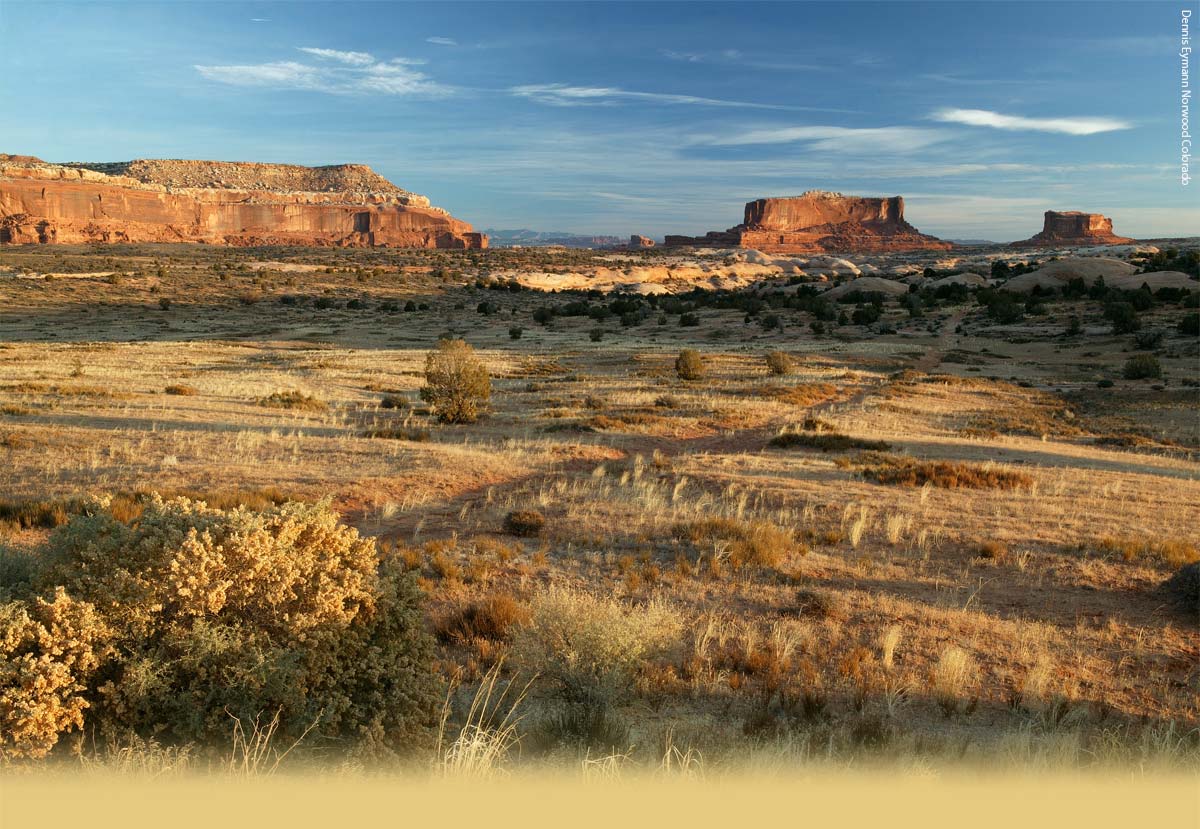121-year-old western Colorado mining flume clings to its secrets
By Nancy Lofholm
WESTERN MONTROSE COUNTY — There is something about the tattered remnants of a 121-year-old mining marvel that keeps drawing the curious back to this remote canyon along Colorado 141.
Those who keep returning to measure, survey, photograph and examine the mysterious structure known as the Hanging Flume call it “flume fever.” The afflicted wake in the middle of the night to puzzle over how enterprising but misguided gold seekers pinned a 10-mile-long wooden water chute to a sheer cliff to create a hydraulic gold separator. They spend years in faraway city offices calculating angles and load factors and building mini models.
Finally, on this blustery week, about a dozen of them — engineers, scientists, archaeologists, industrial riggers, carpenters and historians — gathered at a cliff edge that locals like to say is “50 miles from nowhere” to remake history.
“The fascination with this thing is beyond belief. It’s a window into the way people thought in those days,” said Bureau of Land Management archaeologist Glade Hadden.
The flume-fevered are here to test theories by rebuilding a 48-foot-long section of the flume in much the same way they think it was done in the late 1880s.
There are some concessions to modern time constraints and funding limits: The whine of power saws and drills cuts through the cedar-whipping wind. Two-way radios crackle with questions and instructions. And the riggers clank at every step with collections of the latest climbing equipment slung across their chests.
But as was done in another era, they use ropes to ease 200-pound ponderosa pine frame pieces and rough-sawn planks over a cliff face to two men balanced on bits of antique wooden braces 100 feet down the red-sandstone wall. Those men, who rappelled to their spots, fit the unwieldy pieces into what shapes up to be a 6-foot-wide and 4-foot-high wooden trough. The trough is perched on the original wooden braces that look like a long line of number 7s pinned with iron supports into the rock.
While they build, they continue to wonder.
“The guys who built this”
“I am thinking about the guys who built this every second I am down here. I think about it even when I’m not down here,” said New York firefighter, dairy farmer and sometimes industrial rigger Donn Hewes, who talked by radio to those on top as he worked on the flume.
When the flume was originally built, an estimated 25 men worked three years to build the 10 miles of hanging flume on the cliff along with excavating another 3 miles of earthen flume.
The idea was to move enough water from the Dolores and San Miguel rivers through this downward-pitched chute to create hydraulic pressure that would sift out gold. The chute worked as planned — pressurizing the water through an amazingly precise 90-foot drop over 10 miles — but the gold in that part of Colorado was too fine to easily separate. The flume was shut down after just three years and declared a failure.
The dry wooden chute became something of a curiosity for locals, some of whom walked the flume for thrills. Eventually, they started stripping boards from the structure to use in the construction of homes and uranium mines.
Those losses of major pieces of the flume, combined with the fact that there are no written design records or construction photographs of the original flume, contribute to its mystery and allure for those with a scientific bent.
Ron Anthony, a wood scientist from Fort Collins, has been working on finding answers for about a decade. He put together this latest hands-on attempt to unravel its mysteries with the help of a $100,000 grant from the Kaplan Fund and $25,000 from the Hendricks Family Foundation.
New York, where the Kaplan Fund is based, plays a large part in a project that’s in one of the most remote parts of Colorado.
Besides the Kaplan help, New York City-based engineer Derek Treistad, whose firm devotes much time to deciding placement of artwork in museums, has been studying the flume for the past six years. Kent Diebolt, founder of Ithaca-based Vertical Access industrial rigging company, whose workers normally scale skyscrapers and historical buildings, is back for his second up-close peek into the flume’s mysteries.
There also were local hands in the project.
Appreciation for flume
T.J. Short, a carpenter born and raised in nearby Naturita, said he has seen the flume his whole life but never appreciated it enough until he was hired to work on the project this week.
“It’s humbling to learn how the old carpenters did this,” Short said. “Now I know how important this is.”
Once this week’s construction wraps up, there will be much more work to be done on the flume at a time when historical-preservation funds are diminishing. The Western Colorado Interpretative Association is seeking funds to put up better signs to attract the attention of more motorists on the Unaweep and Tabeguache Scenic & Historic Byway. Two books are planned, and a new video is being produced. Also in the works are plans for a flume park near the site of the former town of Uravan.
Hewes, who has had as close a look at the flume as anyone in modern times, said there will still be questions to ponder even after this week’s exercise, including how workers from the pre-power-drill era managed to drill so many holes into rock.
“In the grand scheme of things,” Hewes said, “this is still as much a mystery as it ever was.”
Read more: 121-year-old western Colorado mining flume clings to its secrets – The Denver Post http://www.denverpost.com/news/ci_20393944/121-year-old-western-colorado-mining-flume-clings#ixzz2MyrkuwTe
Read The Denver Post’s Terms of Use of its content: http://www.denverpost.com/termsofuse
Follow us: @Denverpost on Twitter | Denverpost on Facebook

